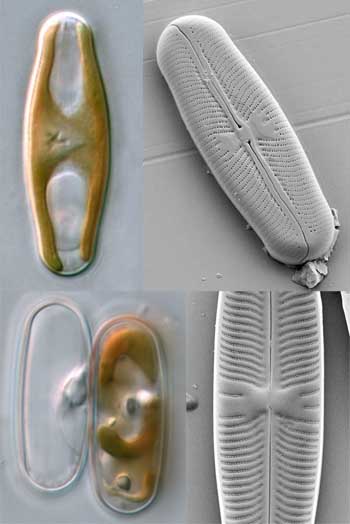Commentary
Mann's description was based on observations of only c. 10 species. However, nearly 20 years of extra observations have not suggested that any changes need to be made in the 'provisional' description, except that some species have been found to be auto- or apomictic, producing auxospores without prior pairing and gamete exchange. Very few of the characters listed are individually unique to Sellaphora. That does not necessarily mean that they are not synapomorphies for Sellaphora, only that similar characteristics may have evolved independently in other, unrelated diatoms (convergent evolution). For example, character 9 is shared by Eunotia and must have been acquired independently. Some of the characters are symplesiomorphies, shared by Fallacia, Rossia and the Pinnulariaceae, which are probably the closest relatives of Sellaphora. The combination of characters listed, however, is apparently unique.
Many of the characters concern the structure or activities of living cells. Indeed, it is impossible to assign a species to Sellaphora without information about the living cell or molecular genetic data, unless the cell wall possesses derived characters that link the diatom with species already known to belong to the genus. For example, the Sellaphora pupula-bacillum group (but not other Sellaphora species such as S. laevissima or S. seminulum) all possess small transverse bars internally, near the ends of the valves. Possession of such bars in a diatom with small round poroids and deflected internal central raphe endings allows species such as S. subpupula Levkov & Nakov in Levkov et al. to be assigned to Sellaphora, despite the absence of any information on the living cell and its life cycle.


 This site is hosted by the Royal Botanic
Garden Edinburgh.
This site is hosted by the Royal Botanic
Garden Edinburgh.